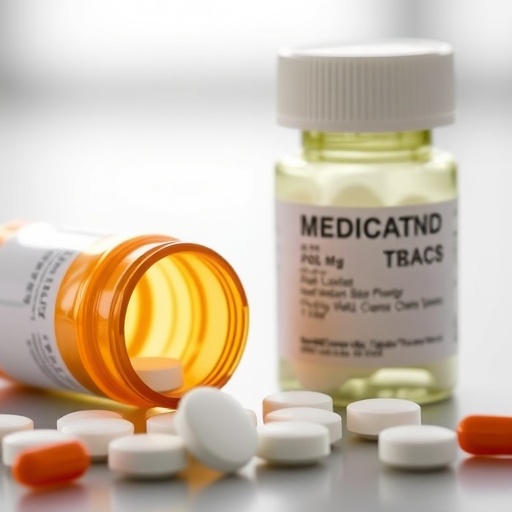As the United States transitions out of the pandemic-era Medicaid enrollment enhancements, a palpable shift is emerging in the landscape of opioid use disorder (OUD) treatment. A recent comprehensive study conducted by RAND Corporation reveals a consequential rise in discontinuations and a concurrent decline in initiations of buprenorphine treatment episodes — a cornerstone therapy in the battle against OUD. The cessation of continuous Medicaid coverage, known as “Medicaid unwinding,” has ignited concern over the stability and accessibility of life-saving interventions for millions who depend on this public insurance.
Buprenorphine, a partial opioid agonist, holds a central role in medication-assisted treatment (MAT) for OUD, reducing illicit opioid use and overdose risk. Medicaid, covering roughly 40% of treatment episodes nationwide, had expanded its enrollment protocols during the COVID-19 pandemic to provide uninterrupted coverage to beneficiaries. This protective policy shielded many vulnerable individuals from the administrative churn that typically precipitates disenrollment. However, as states resume standard Medicaid eligibility procedures, an unprecedented wave of disenrollments has materialized — surpassing 25 million individuals.
The RAND study meticulously analyzed buprenorphine prescription fills across all 50 states and the District of Columbia from January 2021 through December 2023, leveraging retail pharmacy data to assess treatment episodes. Approximately 45% of these episodes were funded via Medicaid, supplemented by commercial insurance, Medicare, discount cards, and cash payments. Crucially, the research stratified states into categories of high, moderate, and low Medicaid unwinding intensity to elucidate differential impacts on treatment continuity.
Findings indicate a troubling correlation: in the immediate six months following Medicaid unwinding, the number of treatment episodes paid for by Medicaid that ended increased by an average of 3% compared to the pre-unwinding period. This effect was more pronounced in high-unwinding states, doubling the rate seen in moderate or low-unwinding jurisdictions. Simultaneously, new treatment initiations funded by Medicaid declined by an average of 2.6%, with the steepest drop of nearly 3.9% concentrated in states experiencing the greatest disenrollment.
These statistical shifts raise alarm bells because buprenorphine’s effectiveness hinges on sustained engagement and timely treatment initiation. Interruptions not only jeopardize individual recovery but potentially contribute to increased societal opioid morbidity and mortality. Intriguingly, the study notes that losses in Medicaid-funded buprenorphine treatment were not fully offset by compensatory uptake from commercial insurance or out-of-pocket payments, suggesting comprehensive coverage gaps.
The rollback of pandemic-era policies underscores the fragility of healthcare access for marginalized populations grappling with addiction. While some disenrolled individuals may pivot to alternate payment routes or insurance coverage, systemic obstacles remain formidable. Gaps in insurance often translate into treatment interruptions, exacerbating overdose risks during critical periods of vulnerability.
Bradley D. Stein, lead author and senior physician policy researcher at RAND, emphasizes the policy implications, stating that sustaining gains made against the opioid overdose crisis necessitates stable and uninterrupted access to MAT. The study’s timing coincides with federal legislation projected to strip Medicaid coverage from nearly 10 million Americans by 2034, amplifying urgency for nuanced policymaking that safeguards treatment accessibility.
The study also highlights the need for enhanced data infrastructure to monitor the effects of Medicaid unwinding on addiction treatment and broader public health outcomes. The confluence of opioid epidemic dynamics with healthcare coverage fluctuations represents a complex policy arena where precision interventions are paramount.
Rachel K. Landis, coauthor and policy researcher, observes that these findings are consistent with broader research trends showing significant reductions in total buprenorphine prescription fills in states with substantial Medicaid disenrollment. This pattern may foreshadow escalating treatment gaps and associated morbidity if unaddressed.
Buprenorphine’s pharmacological profile, offering a ceiling effect that lowers overdose potential compared to full opioid agonists, makes it indispensable in mitigating fentanyl’s rampant lethality. Disruptions to its accessibility during Medicaid unwinding effectively undermine a key public health intervention. The complexity of navigating insurance coverage during this transition requires coordinated efforts among policymakers, healthcare providers, and social services.
Research funding for this investigation was supported by the National Institute on Drug Abuse (NIDA) and the Foundation for Opioid Response Efforts (FORE), underscoring federal and philanthropic commitment to addressing the opioid crisis through evidence-based policy research. The study’s robust data-driven approach provides critical insights poised to inform future Medicaid policy deliberations.
As the nation grapples with the opioid epidemic’s persistent toll, the RAND study serves as a clarion call for maintaining and strengthening coverage provisions that enable continuous buprenorphine treatment. Without adequate intervention, Medicaid unwinding may inadvertently escalate barriers to care, reversing hard-fought progress in reducing opioid-related harm.
Subject of Research: People
Article Title: Medicaid Unwinding: Association With New and Ending Buprenorphine Treatment Episodes
News Publication Date: 21-Aug-2025
Web References: DOI: 10.1097/ADM.0000000000001573
References: National Institute on Drug Abuse, Foundation for Opioid Response Efforts
Keywords: Opioid addiction, Health insurance
Tags: buprenorphine treatment episodescontinuity of care in medication treatmentdisenrollment from Medicaid programshealthcare access for opioid addictionimpact of Medicaid on addiction treatmentinsurance coverage for substance use disordersMedicaid unwinding effectsmedication-assisted treatment challengesopioid crisis and public healthopioid use disorder treatment declinepandemic-era Medicaid changesRAND Corporation study findings





